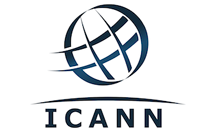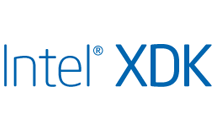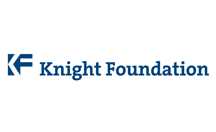Web @ 25, W3C @ 20 – The role of the W3C in standardizing the Open Web Platform
Last week I reflected on the impact of the Web, starting with the original 1989 vision of Tim Berners-Lee. In this second of four posts I describe why the World Wide Web Consortium came into being and how it serves the Web community.
The creation and ethos of W3C
It didn’t take long for the Web to catch on, first within university environments, and then ultimately to the general public. Individuals and companies alike created websites. So there was an imperative to enhance the technology of the World Wide Web. Adapt new capabilities. What’s the best way to create the content? To browse the Web? To ensure that the Web could be viewed on different devices?
One approach to enhance Web technologies could have been to allow “a thousand flowers to bloom” and leave it at that. There is tremendous value in market-driven innovation, and the Web makes it possible for many stakeholders to innovate. But without the extra step of bringing people together to achieve global interoperability, the vision of One Web might never have taken off, or success might have come much more slowly.
What would have happened? Different companies with different ideas would have enhanced the Web in different ways. That could have worked for a while. But ultimately, the Web would have become a veritable Tower of Babel – a frustrating experience for users epitomized by the phrase “best viewed in browser X”. Inventors working on the next generation could have taken out patents which in some cases could have shut out others. Market leaders would have selected technical solutions that optimized for their companies rather than the Web as a whole. Any of these results would have thwarted the vision of the Web. A Web that lacked interoperability, universality, the best possible technologies, or a Web that excluded participants via patent encumbrances would have destroyed the Web as a global instrument to share information.
Faced with these concerns, in October 1994, the World Wide Web Consortium was formed to ensure that Web enhancements follow the guiding principles of the Web. It was organized to reflect the stakeholders of the Web. Tim Berners-Lee has been the Director of the W3C from its inception. On the one hand Tim guides the architecture of the Web by having formal approval authority for new standards. On the other hand, true to the principle of – “this is for everyone” – Tim exercises this authority lightly - by delegating enhancements to W3C Working Groups – and only getting personally involved when an impasse is reached.
The W3C has established “Leading the Web to its Full Potential” as its mission. W3C is a small organization in a huge ecosystem and does not pretend that it alone is the driver of progress on the Web. But we maintain this mission statement because of a belief that the values that surround the building of the core of the Web are critical to assuring continuous, rapid growth.
The structure of the W3C reflects the guiding principles of the Web in more ways than one. As opposed to many standards organizations, the W3C has a sizable staff of technology experts that work with both Tim and Working Groups to facilitate Web enhancements and support the architectural cohesion of the Web. This staff is Hosted by four research institutions (MIT in Cambridge, ERCIM in Sophia-Antipolis, Keio University in Tokyo, and Beihang University in Beijing) to work in an innovative forward-thinking environment.
Organizations large and small: innovative companies, research institutions, non-profits, universities, and start-ups are Members of the consortium so that ideas that are relevant to industry, research, and government are discussed and then deployed. The general public is also a stakeholder and interacts with the W3C. First, specifications are made available to the public at several formal steps of the W3C process to ensure that the public can comment on the work. Individuals who have ideas for the Working Groups whose organizations are not Members of W3C participate as Invited Experts. All W3C specifications are available to the public no cost. Our community translates specifications from English into widely spoken languages, which facilitates global adoption.
While W3C is a technical standards organization, it aligns with the original values and principles of the Open Web. Its highest priority is interoperability – to maintain the original vision of a Global Web where any device can access any Web site. In 2003, W3C formalized the W3C Patent Policy to enshrine the imperative to avoid patent encumbrances. W3C does not object to businesses using the Web and patenting aspects that are key to their businesses. But if a technology is to qualify to be “part of the core of the Web” – it must support interoperability without encumbrances. Companies that built their businesses on today’s Royalty-Free Web have an obligation to invest in the next generation of an RF Web.
Interoperability from a technology perspective does not work if it does not extend to humans. In October 1997, W3C established the Web Accessibility Initiative to ensure that the disability community could get full access to the Web. In a world where access to vital aspects of life depends on the Web – we cannot disenfranchise those with disabilities. We have an Internationalization Activity so that the Web is truly “for all” – independent of language, or character set.
As the Web matures, certain areas take on greater focus. In recent years, ensuring that specifications have what’s needed to provide privacy and security is essential. With a proliferation of different types of devices that access the Web, the guiding principle of device independence is especially relevant.
This model has been successful. In 20 years, W3C has created 321 Recommendations, and currently has 46 Working Groups (and 14 Interest Groups) with 1938 Drafts in preparation. Not all Drafts will become Recommendations, but it shows the scope of activity.
So when we celebrate the Web @ 25 and the W3C @ 20 – let’s recall the foundational values and celebrate them as well.
Technology progress
The 25 years of the Web has been a period of rapid technology advance in information processing. The Web has been a participant and driver of some of these technologies, but many of these technology advances have been independent of the Web. So what is the role of the Web with respect to core technology?
At one level, the Web stands out in its commitment to a single technological imperative – Interoperability. That is to say, the challenge of the Web technical community is to grab every new technology and make sure that it works interoperably on a growing diversity of devices together with this global database.
Often new technologies are first absorbed as proprietary extensions to the Web – they are not common enough to find their way into the core platform. Leading edge users combine the existing Web and the new technology into a unique “application” of the core Web. A recent example of that is video, whose use on the Web began as proprietary plug-ins. When it becomes clear that such a new technology needs to be in the basic infrastructure, the technology is added to the core Web (e.g. video in HTML5).
We track an extensive set of technologies – because over time many need to be brought into the Web architecture. Some of the important ones include: graphics, video, voice, real-time communications, linked data, security, cryptography, identity management, fonts, geo-location, social networking, mobile technologies, encoding, devices (e.g. game platform, e-books, automotive platforms, set-top boxes), and cloud computing.
The Open Web Platform
W3C has had the mission to Lead the Web to its Full Potential, from its inception, but in the last few years we have been talking about the Open Web Platform. What is the import of that phrase?
It has always been critical for there to be an Open Web. In the earliest days, the Web was a series of linked pages and it was important that these pages could be accessed from any device - typically different desktop and laptop devices with different operating systems.
Today’s Web is a far richer place from multiple points of view. Its use goes beyond the static reading of documents from personal computers.
Today’s Web is a fully distributed platform for building applications. Thus we call it a Platform in that these applications run across a wide dynamic range of devices with different operating systems and different purposes. These devices include laptop and desktop PCs, tablets, e-book readers, set-top boxes, and automotive infotainment systems. In essence, the Web community has built the most interoperable platform in history. Some view this platform as a distributed operating system across disparate devices - in fact several vendors have built systems which are operating systems based on Web technology (e.g., Firefox OS and Tizen).
So on the “open web” App writers develop distributed applications that can run on any platform. These technologies are also customized by particular industries to create industry-specific platforms. These include ePub (for publishing), efforts to build a platform for entertainment (driven by W3C’s Web and TV Interest Group), efforts to focus on the needs of mobile devices (in W3C’s Web and Mobile Interest Group), and efforts to build a platform for automotive vehicles (driven by W3C’s Automotive Platform Business Group).
The OWP has rich capability. To make sure that there is a strong basis for building applications, applications programming interfaces (APIs) are made available in W3C’s WebApps Working Group, SysApps Working Group, and DAP Working Group (among others). It is a multimedia platform that supports video, graphics, a fonts framework, rich styling (driven by W3C’s CSS Working Group). There are efforts that focus on security and privacy. Web structured data provides deep and descriptive linking (driven by W3C’s RDF Working Group).
Next week: Future Direction of the Open Web Platform.










Comments
Ontario
What about WHATWG that created the HTML5?
Jeff
Ontario, we consider WHATWG to be important partners. More about that in part 4 of this post.
Chris Glasier
What about the case for practitioner / technologist joint-venture where Joe Doe changes his work method to match object-based coding and in return shows technologists what tasks he considers could be automated.
http://www.w3.org/community/forum/2014/03/25/open-email-to-phil-archer-data-activity-lead/
http://glasier.hk
Chris Glasier
Sorry, a more uptodate post better deals with the suggestion.
http://www.w3.org/community/forum/2014/03/31/w3-operating-system/